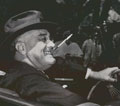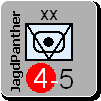wosung
Posts: 692
Joined: 7/18/2005
Status: offline

|
quote:
ORIGINAL: c92nichj
quote:
ORIGINAL: paulderynck
quote:
Playing in CWIF the Chineese theatre have been mostly about moving your units around the other guy trying to cut his supply or outflanking him, actual battles without overwhelming odds was few.
Very unhistorical all in all.
I'm no expert but the above is how I picture the war between Japan and China. In WIFFE a major battle in an impulse involves 6 corps against 2 which interprets as a two week battle between two armies "in the real world". Were there really as many major battles fought between China and Japan as we typically see in a game of WIFFE?
I'm no expert either but as I understood the war it was not much action going on.
Advance building HQ's by the japaneese to be able to keep more of his units in supply was seen in two of my three CWIF games, never in a WIFFE game.
Encircled armies(4-5 corps) permanently set of of supply was seen in my games both Chineese and Japaneese.
Flank and outrun your enemy was the major part of the game, unit density was to low for anything else.
To compare with WIFFE it plays quite like a campaign in the middle east, low unit density and often units outof supply both so is your enemy so not many fights, more moving into objectives unopposed.
Perhaps it helps the discussion of AI strategy in China to look what happend historically:
1. Even from 1939 to 1945 each year there used to be at least one regional (counter)offensive in China, either Jap or Chinese. Regional means North, Middle or South China.
2. The Chinese first line of defense usually was penetrated, because IJA was equipped with more artillery.
3. After breakthrough Japanese offensives mostly were not very successful simply because of lacking troops. Chinese used deep defenses or more often maneuvered against Japanese line of communication.
4. Huge areas behind the Japanese frontline were Chinese controlled, esp. in the countryside away from the rail lines.
5. Chinese Communist Yennan base area itself did not have a frontline towards the Japanese. It did not include Lanchow or Sian. It was surrounded and guarded by Nationalist Chinese elite units.
6. Logistically the big rivers were very important, at least in summer times. Perhaps in MWIF product2 they could count as railroads...
Sources (Esp. Points 2-3):
Wolf Schenke, Kampplatz Ostasien [Battlefield East Asia], Berlin 1941.
Wolf Schenke, Reise an die Gelbe Front [Journey to the Yellow Front], Berlin 1943
Wolf Schenke, China im Sturm [China in the Storm], Berlin 1949.
Schenke from 1937 to 1939 was the war correspondent of the "Völkische Beobachter" (the daily newspaper of the Nazi party) in China. As such he could move freely on boh sides of the front, because Germany then had good relations with both sides.
Regards
|
 Printable Version
Printable Version











 may well be the best strategy for the japanese player. My thoughts for what they are worth are below
may well be the best strategy for the japanese player. My thoughts for what they are worth are below 



 New Messages
New Messages No New Messages
No New Messages Hot Topic w/ New Messages
Hot Topic w/ New Messages Hot Topic w/o New Messages
Hot Topic w/o New Messages Locked w/ New Messages
Locked w/ New Messages Locked w/o New Messages
Locked w/o New Messages Post New Thread
Post New Thread